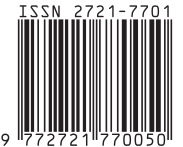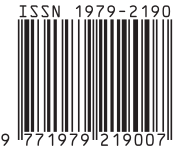Keragaman Arthropoda Herbivora dan Musuh Alami Pada Tanaman Padi Lahan Rawa di Rowopulo Kecamatan Gumukmas Kabupaten Jember
Abstract
Rowopulo is one of the swamps in Gumukmas, Jember Regency with its unique soil in the form of peat soil that floats on water and by the community used for rice cultivation whose production is influenced by the presence of Plant Pests (OPT) which is dominated by the Herbivod Arthropods. The presence of herbivorous Arthropods in the swampland rice ecosystem can be suppressed by the presence of useful Arthropod populations such as predators, parasitoids and pollinators. Related to this, a study was conducted with the aim to find out the diversity of Arthropods found in swampy rice plantations. The study began with a land survey, then the determination and marking of observation plots on the map and matching these locations using GPS (Global Positioning System). Observations were made on plots that were made based on the extent of rice plants that were still in one stretch and the same irrigation flow. Each plot was observed 10 times at 7-day intervals from rice plants aged 14 days after 77 days after planting. Arthropod sampling using sweep net method. Catching arthropods are put into vials of 5 ml size and then identified up to family level and the diversity, evenness and wealth index of the species is calculated. The results of research on swamp rice plants contained 37 families. 10 families act as herbivorous Arthropods, 15 families as predators, 6 families as parasitoids, 1 family as pollinators and 5 families as detritivores. The highest diversity index in plot 1 was 2.95, while the lowest in plot 2 was 2.70 with the medium category for all observation plots. The magnitude of the diversity index is due to the dominance of only a few orders, such as Orthoptera and Diptera; the highest species wealth index in plot 3 with a value of more than 4 in the high category; Evenness index of all observation plots has a value of less than one with uneven categories.
- Authors retain copyright and grant the journal right of first publication with the work simultaneously licensed under a Creative Commons Attribution License that allows others to share the work with an acknowledgement of the work's authorship and initial publication in this journal.
- Authors are able to enter into separate, additional contractual arrangements for the non-exclusive distribution of the journal's published version of the work (e.g., post it to an institutional repository or publish it in a book), with an acknowledgement of its initial publication in this journal.
- Authors are permitted and encouraged to post their work online (e.g., in institutional repositories or on their website) prior to and during the submission process, as it can lead to productive exchanges, as well as earlier and greater citation of published work.







